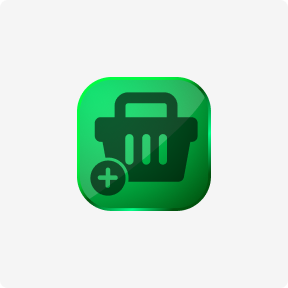According to Oracle NetSuite “, Each ERP module is designed for specific business functions, providing the data, and supporting the processes that will help those employees do their jobs. Every module plugs into the ERP system, so the system provides a single source of accurate data, even as the business adds new modules. If the ERP system is the toolbox, the modules are the screwdriver, wrench, hammer, and other tools in the box that each has specific uses. To overcome examples of enterprise systems such difficulties, in recent years, many organizations have opted to replace several distinct information systems with a single integrated system that can support business activities for different business functions. Systemize accounting with third-party transactional systems to implement bookkeeping policies and meet diverse reporting requirements in an automated and controlled technique. You may utilize support references to review results and assess subledgers.
This metric considers not only the average ratings across numerous rating sites but also the number of reviews each provider has to ensure the rating is reflective of a broad user base. If your goal is to improve the performance of employees in various departments, Acumatica can help. Such software can help you effectively determine what moves or actions your organization takes to generate the most revenue.
What is Enterprise System (ERP)?
At the same time, the CRM module could record customer data such as order history and billing information. Enterprise resource planning (ERP) consists of tools intended to facilitate the management of all information that impacts a company’s business decisions. Depending on your company’s niche, you’ll benefit from different functionality available in ERP software. There are several ERP system examples that can streamline operations for manufacturing, accounting, marketing and more. Endress + Hauser is an industrial machinery and components (IM&C) company based in Germany.

It implemented a system that integrated its thousands of applications, standardized processes, and restructured warehouse management systems—breaking down silos for seamless, integrated coordination of work. Also, menial and manual tasks are eliminated, allowing employees to allocate their time to more meaningful work. Some businesses benefit from enhanced real-time data reporting from a single source system.
Company details
That sort of full data transparency gave management visibility into the impact of day-to-day project activities, providing critical information to help support key decision-makers. Those advanced and predictive analytics reduce unknowns and lower risk while helping further cut costs and increase project efficiencies. Customer information comes in many different formats, from many different data sources and applications. With enterprise integration, businesses can connect and interpret all this information in one place, gain a 360-degree view of their customers and audiences, and ensure compliance with privacy regulations. Enterprise integration is the use of technology and methodologies to tightly connect everything in an IT landscape – including applications, data, clouds, APIs, processes, and devices. It combines multiple integration approaches into one combined effort, with one governance model.

Enterprise resource planning (ERP) manages and integrates business processes through a single system. With a better line of sight, companies can better plan and allocate resources. Without ERP, companies tend to operate in silos, with each department using its own disconnected system. Customer relationship management systems are customized to meet the specific needs of a business.
Next steps with enterprise software on AWS
The total cost of the ERP system itself ranges from $1,740 per month on average for small businesses to $9,330 per month for enterprises. These figures don’t include per-user fees or the cost of implementation, training and maintenance. In addition, QT9 makes it easy to track supplier pricing, enforce minimum purchase quantities and create supplier backorders.

Accurate and complete reporting help companies adequately plan, budget, forecast, and communicate the state of operations to the organization and interested parties, such as shareholders. Businesses employ enterprise resource planning (ERP) for various reasons, such as expanding, reducing costs, and improving operations. The benefits sought and realized between companies may differ; however, some are worth noting. HubSpot helps marketers and sales managers reach out to contacts, nurture leads and monitor the results of campaigns. The work of both units is aligned since all information (for sales and marketing teams) is stored in one place. The Performance Co-Pilot (PCP) suite in Red Hat Enterprise Linux (RHEL) helps with performance, debugging, and visualization.
Business Benefits of Information Technology
Enterprise software, or enterprise application software, is computer software used by organizations rather than individual users. Common types of enterprise software include contact centre software, business intelligence, enterprise communication, inventory management, marketing tools, online payments, and enterprise resource planning. Organizations use enterprise software to run, scale, and optimize their day-to-day operations and processes, as well as build their own unique applications. The enterprise resource planning system integrates software applications, such as purchasing, finance, human resources and inventory management. Within an ERP system, the integrated software modules, such as sales, quality management and accounts receivable, communicate and share data.
As a rule, so-called content management systems (CMS) are used to create, publish, and manage content to deliver it in the best way possible. When choosing the right CMS, you first need to understand your specific needs and compare the available solutions in the market to find the one that fits your needs perfectly. This is an important step as the offer for content management systems is wide, including free open-source platforms as well as expensive but more complete enterprise tools. Let’s discuss this further through one of the biggest CMS players, WordPress. They enable communication with prospects, customers, and partners across all available channels to increase reach, and ultimately, maximize customer value. They provide a complete suite for candidate relationship management, advanced communications and hiring suite alongside with a partner ecosystem that lets you integrate other recruiting solutions via their marketplace.
Top-notch Examples of Natural Language Processing in Action
Stripe charges a small fee on each payment so you don’t have to invest large sums into different payment methods. It offers various partnership options with other sites that make it easy to implement Stripe to billing software, for example. G2Crowd reviewers gave this tool 4.4 stars while Capterra ones gave it an extremely high rating of 4.7 stars, hence, Stripe is worth testing out to explore all the features on your own.
- We just demonstrated the abilities of two features, but ERP systems come with several.
- A Project Manager (PM) and a Business Analyst (BA) are the specialists that work most during this phase.
- Below are the steps to set up all three methods and then measure the power consumption for some workloads.
- The solution collects data from a custom Google Analytics-like ad pixel and third-party integrations.
- The best treasury management system offers intelligence reporting to organize data and deliver detailed on-demand reporting and powerful KPIs to make data-driven decisions.
- For more than a century, Harrison Publishing House (HPH) has been a trusted provider of material catalogs for the American construction industry.
During her career, she has published business and technology-based articles and texts. Nordmeyer holds a Bachelor of Science in accounting, a Master of Arts in international management and a Master of Business Administration in finance. A supply chain is the collection of people, tasks, equipment, data and other resources required to produce and move products from a vendor to a customer.
What is an enterprise software product?
Thanks to a modular service-oriented architecture, developers can easily add new functionality without wasting a lot of time on debugging. The system handles more than 2 million environmental records without performance hits thanks to Azure and Kubernetes autoscaling. Managing the budget, timelines, and stakeholder expectations places high requirements on the Project Managers. They have to first identify all people that might be impacted by the project. Such a meeting should be short and to the point, focusing on the project’s future.
